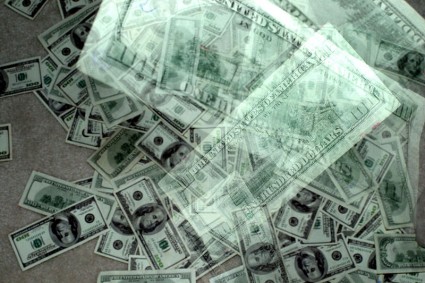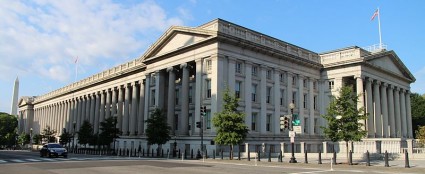Submitted by Peter Schiff of Euro Pacific Capital,
Most market watchers expect that Janet Yellen will grapple with two major tasks once she takes the helm at the Federal Reserve in 2014: deciding on the appropriate timing and intensity of the Fed’s quantitative easing taper strategy, and unwinding the Fed’s enormous $4 trillion balance sheet (without creating huge losses in the value of its portfolio). In reality both assignments are far more difficult than just about anyone understands or admits.
Unlike just about every other economist, I knew that the Fed would not taper in September because the economy is still fundamentally addicted to stimulus. The signs of recovery that have caused investors and politicians to bubble with enthusiasm are just QE in disguise. Take away the QE and the economy would likely tilt back into an even more severe recession than the one we experienced before QE1 was launched.
Given the Fed’s failure to initiate a tapering campaign in recent months (when it was highly expected) it is surprising that most people still believe that it will pull the trigger in the first quarter of 2014. But if the Fed could not take action in September, with Ben Bernanke at the helm and the nation as yet untraumatized by the debt ceiling drama and Obamacare, why should we expect tougher treatment from Janet Yellen? This is particularly true when you consider Yellen’s reputation as an extreme dove and the uninspiring economic data that has come in recent months.
Rather than explicitly describing the possibility of a reduction of asset purchases, recent Fed statements have merely said that policy would be “adjusted” according to incoming data. It has never said what direction that adjustment may take. Yet somehow the market has concluded that an imminent reduction is the only possibility. But the opposite conclusion is more likely. Recession avoidance is really the Fed’s only concern and it will always come down on the side of accommodation. Therefore an expectation for a 2014 taper is just wishful thinking.
But that does not mean that QE will go on forever. It will come to an end, but not because the Fed wants it to, but because the currency markets give it no choice. A dollar crisis would ultimately force the Fed’s hand, and the longer the Fed succeeds in postponing the inevitable, the more damage its policy mistakes will inflict on our economy.
Yellen’s second task will be equally impossible. Since the QE campaign began in 2010 the Fed has more than quadrupled the amount of bonds that it holds on its balance sheet,to more than $4 trillion of Treasury and mortgage-backed bonds. To accumulate this massive cache, the Fed has become by far the largest buyer in both markets. Its purchases have pushed up the prices of those bonds and have kept long term interest rates low for both consumers and businesses.
When the QE was first launched, Ben Bernanke tamped down fears of the program by saying the Fed would one day sell the bonds that it was buying. But as the Fed’s balance sheet ballooned, many in the market began fearing that the unwinding of these trades would crush the market for Treasuries and mortgage-backed securities. Bernanke soon allayed these fears by saying that the Fed would not actively sell, but would simply allow bonds to mature. But this is just a convenient fiction.
If stock or real estate prices were to enter into bubble territory (which I believe has already happened), or if inflation were ever to surge past the Fed’s low target range (which I believe is certain to happen), then the Fed would have to sell bonds to get in front of these trends.
Through Operation Twist, the Fed has already swapped a very large portion of its short-term bonds for long-term bonds. The slow process of waiting for bonds to mature is unlikely to slow down asset bubbles or inflation. The argument also does not account for the fact that the Treasury will have to sell new bonds in order to retire the principle on the maturing bonds. Since the Fed is the primary buyer of Treasury bonds, the Fed would have to add to its balance sheet when it’s trying to shrink it. Such a cycle is just a debt rollover that leaves the size of the Fed’s balance sheet unchanged.
Unless other buyers of Treasuries or MBS can be found to replace the Fed’s prodigious buying, the Fed will remain the only game in town. Given these realities, how can we possibly expect Janet Yellen to actually diminish the amount of assets the Fed holds? She won’t be able to do it and any expectations to the contrary are pure fantasy.
So we should not be asking when Ms. Yellen will begin withdrawing stimulus and shrinking the Fed’s balance sheet. Instead we should be asking how the markets will react when she runs out of excuses for delaying the taper, or ultimately decides to expand QE rather than contract it.
![]()
via Zero Hedge http://feedproxy.google.com/~r/zerohedge/feed/~3/99qbKfST0pE/story01.htm Tyler Durden
























